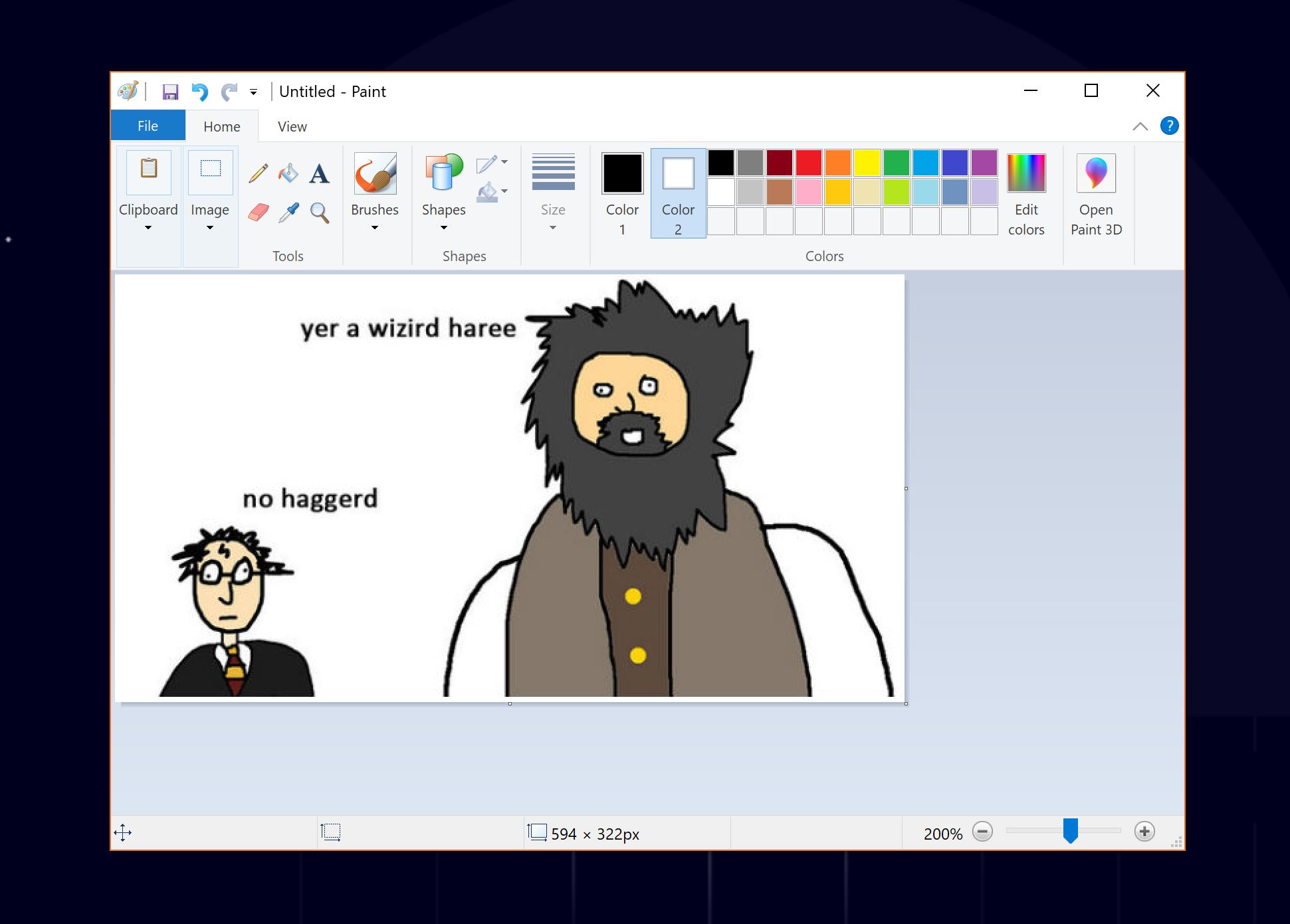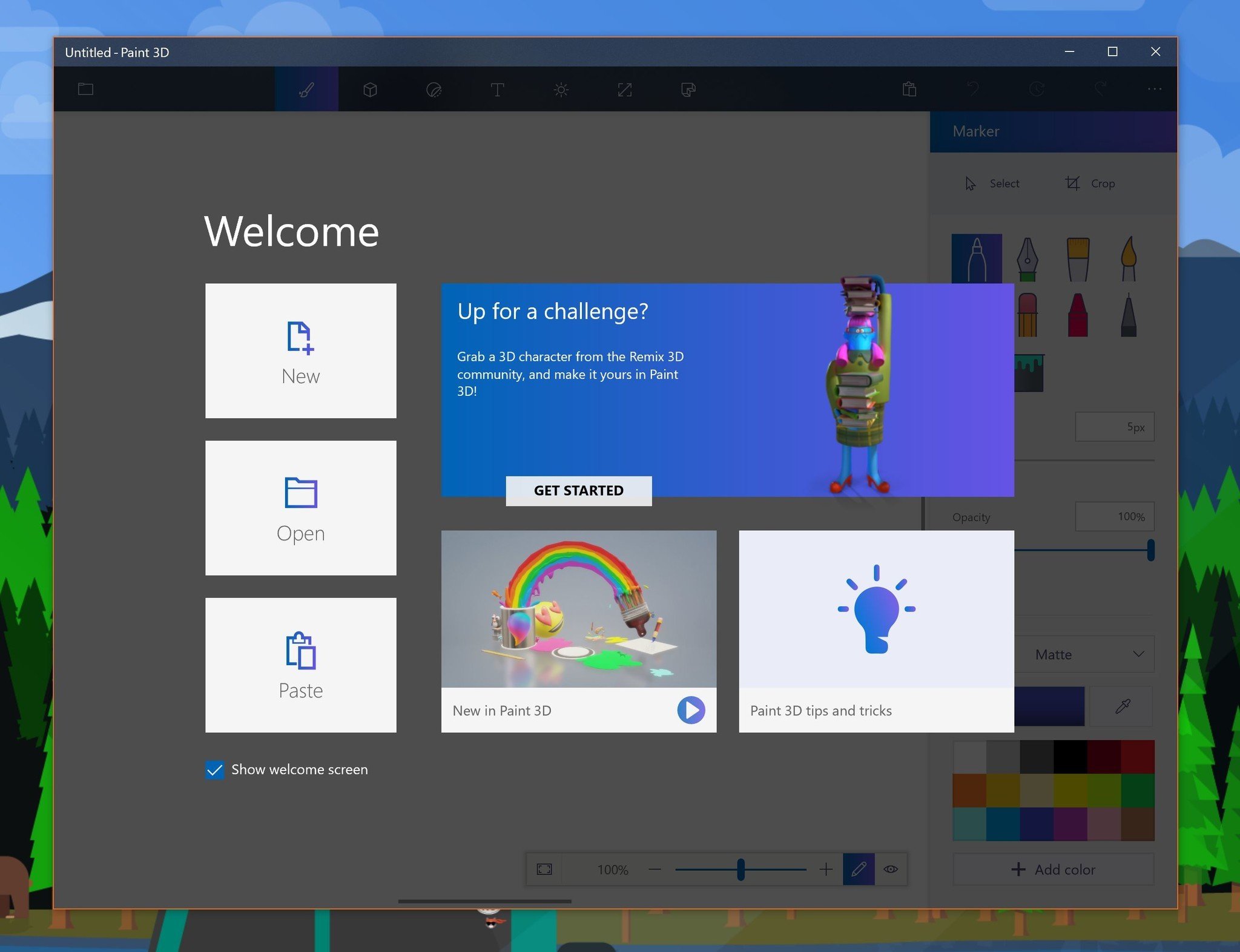
Removing features to streamline Windows is no easy task. Microsoft's casual threat to remove Paint highlights the frustrating dynamic of progress versus our collective nostalgia for simpler times.
Earlier this week, Microsoft released a list of features being deprecated in the forthcoming Fall Creators Update for Windows 10. Depreciation is a weird word for non-techies that means "usable but regarded as obsolete" with no further development. While it is not to say a feature is necessarily removed, it implies that at some point it will be.
Microsoft Paint was put on that death list with new Paint 3D app positioned as a suitable replacement. Immediately, tech media and pop culture sites jumped on the bandwagon of lamenting its future obsolescence. Microsoft eventually reversed its position with a modern twist (more on that below).
While humorous, Paint-gate demonstrates the problem that all tech companies have with a successful product that spans decades.
How we got here
Starting with Windows 8 back in 2012, Microsoft started down a path of modernization of the Windows OS that we've come to know for three decades. With a new user interface (UI), interaction paradigms, and the revamp to "Modern apps" that could span smartphones, tablets, and PCs, Windows 8 started to leave behind many of the older 32-bit apps that have adorned consumer PCs since the 20th century.
Windows 10 — another reboot in many ways — continued down that road of revitalization. Right away, there were observable differences when comparing the legacy Control Panel with newfangled Settings area. Microsoft promised that these differences would fade as the two systems merge in the coming years and the tech giant is sticking to its promise.
 MS Paint. Yeah, that's the good stuff.
MS Paint. Yeah, that's the good stuff.
Microsoft Paint goes back to 1985 with the first release of Windows 1.0. It is a true legacy app from a bygone era that itself has not seen a substantial revision in years, nor has it kept up with the Universal Windows Platform (UWP) shift in app design. In a world where touch and digital inking is taking the lead for artistic expression, Microsoft Paint sticks out as a relic, like Windows Fax and Scan (which, yes, still exists even in Windows 10 today too).
Earlier this year, Microsoft released Paint 3D, which is just by the name implies that this UWP app is the proper torch bearer for terrible office artists of the future, as well as a younger generation who understand 3D is more than goofy red and blue glasses you wear to watch a terrible movie.
When Microsoft even hinted at Paint being removed at some point in the future, internet nerds revolted. Some of it is legitimate criticism, while much of it is also just nostalgia for simpler times.
The perpetual problem of Paint progress
As someone who launches mspaint.exe no less than 15 times a day — seriously — I'm part of the small percentage of people who would be affected by any removal of Paint from Windows.
Moreover, Paint 3D is just not a suitable replacement. Sure, it's simple and even very nice looking, but for old pros like me it's also too much pen and 3D — I don't even know how to put an arrow in a pasted image, or resize an image by pixel count. You know, the simple stuff for photos so I can juxtapose two things for a cheap laugh on Twitter. Serious business.
 Paint 3D. What is this...the future? Heck, no and get off my lawn.
Paint 3D. What is this...the future? Heck, no and get off my lawn.
That issue with Paint 3D just not being a suitable replacement for "hardcore" Paint users is on Microsoft. The company has successfully moved other apps and services like Groove, Movies & TV, Skype (yes, I count it), the MSN suite of apps (News, Weather, Money, Sports), and more to the UWP framework, but Paint 3D is too much new, not enough old.
If 3D is for everyone, why isn't Microsoft marketing Paint 3D to anyone?
To be clear, Paint 3D is a great app. I love the design and the online Remix 3D community. But it's its own thing, not my beloved Paint of yore.
Microsoft either needs to add a basic, non-3D focused "mode" to Paint 3D or just make Paint but with modern UWP principles and keep it separate. Just don't tell me Paint 3D and my "MS Paint" are the same.
We're stuck in the past
While Microsoft deserves some blame for trying to pull a switcheroo with Paint for Paint 3D, the people are in the internets are also ridiculous.
One reason I didn't freak over the Paint-gate situation is that this is Windows.
There are a bazillion other Paint-like apps out there, including the famous Paint.NET, which itself goes back a few decades. In fact, the developer of Paint.NET plans to bring the app to the Windows Store using Microsoft's Desktop Bridge toolset (a.k.a. "Project Centennial").
Moreover, I know — and Microsoft knows (through telemetry) — that most of you are not really using Paint. You just remember drawing goofy things using a mouse while in between Solitaire games during class. That made a lot of the backlash seem disingenuous. Yes, I'm calling you out fake Paint fans.
In a world where Adobe reigns and digital inking is now a legitimate field, the existence of Paint is almost hilarious. It's a token of our shared computing past that we're only reminded of when we accidentally launch it instead of PowerPoint.
The larger problem is Microsoft faces this same issue each time they try to take a meaningful step into the future. Windows Phone users — another camp of dedicated crazies of which I'm a part — lost their collective minds when the notion of Silverlight (itself depreciated in 2012) may be removed in future version of Windows 10 for mobile, even though it would not affect their current 2-year-old phones. Zune Music fans are still sore over that app and don't get me started on the Windows Media Center crowd, who refuse to just let it go.
 Computing like it was 1995...in 2017. Awesome, or just sad?
Computing like it was 1995...in 2017. Awesome, or just sad?
Microsoft is not removing these things because it likes to mess with users, but because it costs money, time, and effort to keep those apps and legacy development platforms going for an increasingly small camp of users (regardless of how vocal they are). Moreover, it takes up space, adds to the complexity of Windows as an OS and is not where the company — nor its new user base — is heading. You can't have bits from 30 years of OS development put into a modern OS and still have it be lean.
This problem is not just Microsoft's though. Apple is facing this with its increasingly boring and non-modern macOS. While iOS is arguably the best smartphone system, does anyone think that in five more years that OS will start to jettison bits, become clunky as Apple packs more into it every year?
While it was humorous to see even 9Gag and Super Deluxe get in on the "ZOMG MS Paint is ded" meme, it speaks more about the power of internet memory and the constant outrage culture we live in than actual concern.
Preserving the past with a modern solution
In the end, it is not clear if Microsoft intended just to pull Paint from future releases of Windows 10 — a distinct possibility — or if the eventual solution, putting it in the Windows Store — was planned. Microsoft does appear to react more often than necessarily anticipate.
Porting Paint to the Windows Store with Microsoft's Desktop Bridge is the ideal answer to this vexing problem, and I'm glad Microsoft is taking that route. In fact, it is so obvious you must wonder why that was not "Plan A" instead of what looks like a fallback resolution. And if it was the original plan, why it was never communicated? All that goes back to Microsoft's continuing struggle with its own messaging and maybe not quite understanding how looney (and loud) some of its dedicated base of users really care about your dad's apps.
 IrfanView — another oldie — is now in the Window Store.
IrfanView — another oldie — is now in the Window Store.
Microsoft should rip out most of those legacy apps — including Windows Fax and Scan, ahem — and put them into the Windows Store. They don't belong in an OS built for 2017. Nonetheless, those apps represent a real legacy and history about how far we have come, and they deserve to be preserved. The Xbox team gets this with its backward compatibility program for older games. Moreover, they represent some real perfection. Microsoft Paint is so beloved despite no updates in years because — like a paperclip — it elegantly solves a simple problem.
But God help Microsoft if they ever remove the Snipping Tool.
Source:
Microsoft's Paint fiasco reveals its struggle to modernize Windows in the internet age


 MS Paint. Yeah, that's the good stuff.
MS Paint. Yeah, that's the good stuff. Paint 3D. What is this...the future? Heck, no and get off my lawn.
Paint 3D. What is this...the future? Heck, no and get off my lawn. Computing like it was 1995...in 2017. Awesome, or just sad?
Computing like it was 1995...in 2017. Awesome, or just sad? IrfanView — another oldie — is now in the Window Store.
IrfanView — another oldie — is now in the Window Store.









